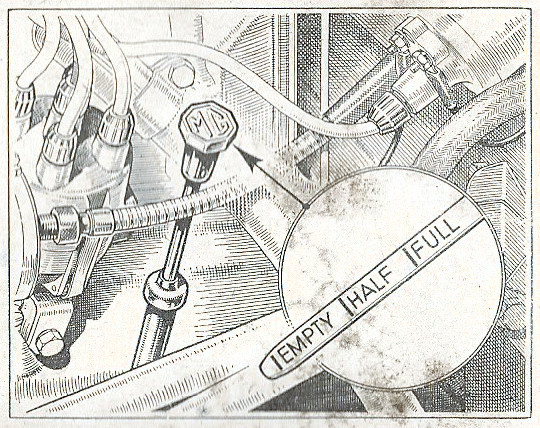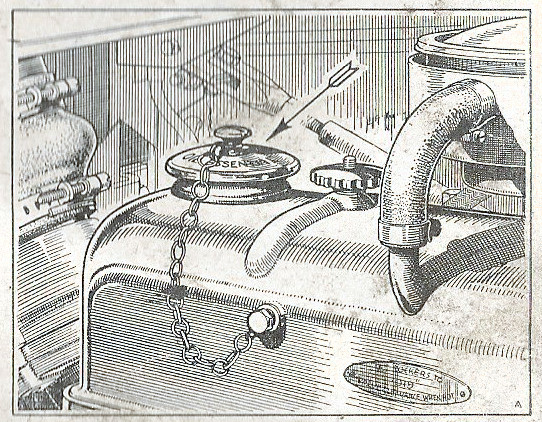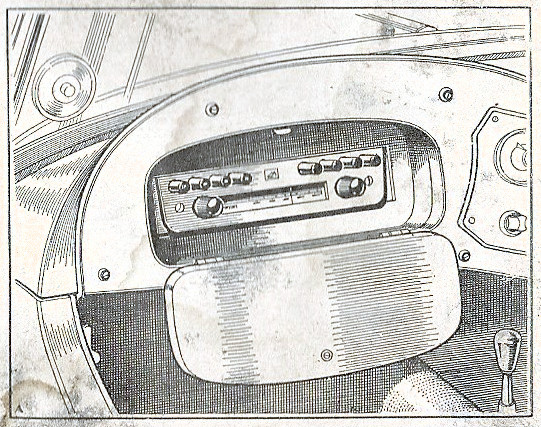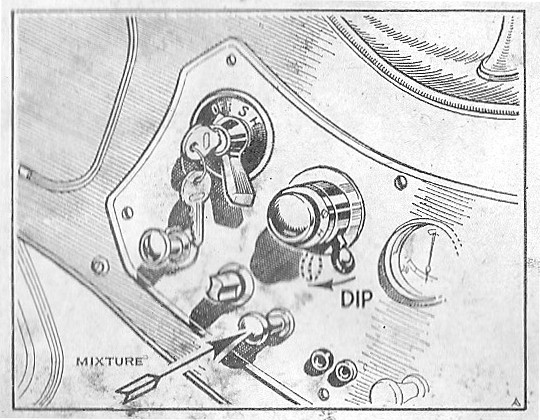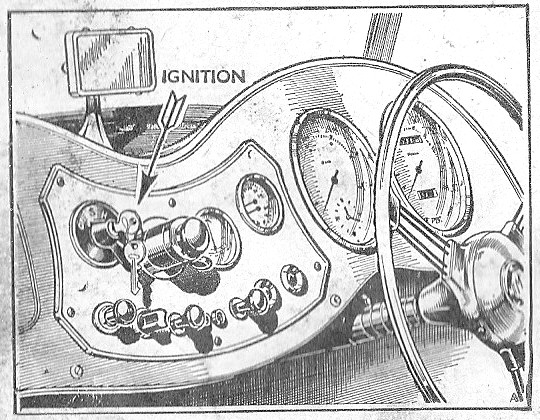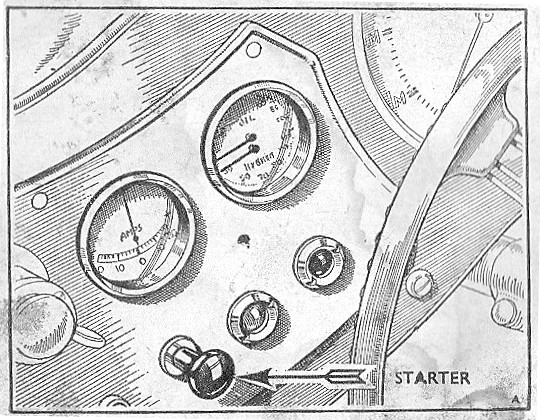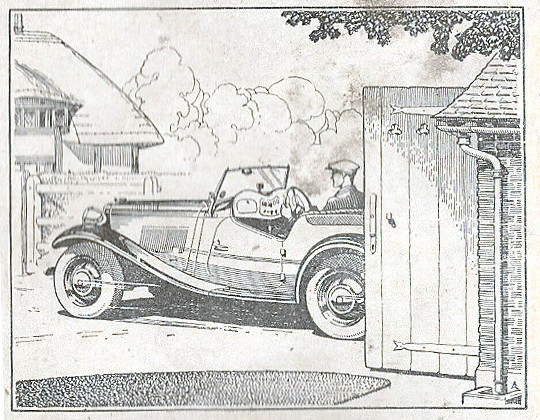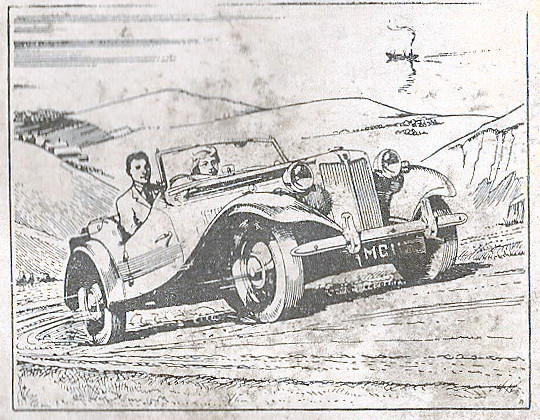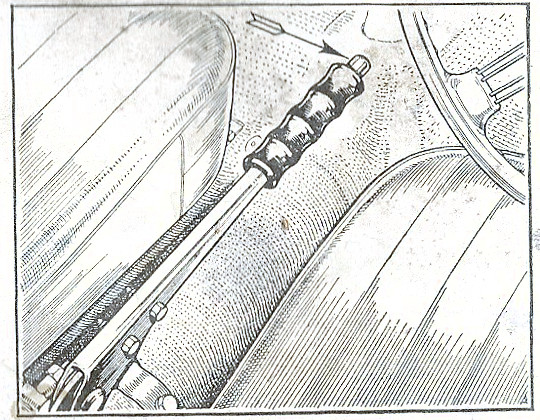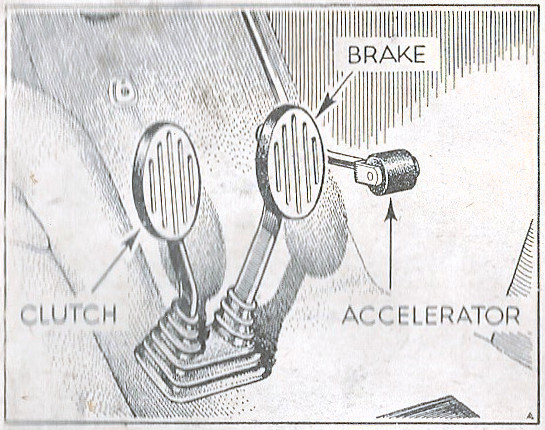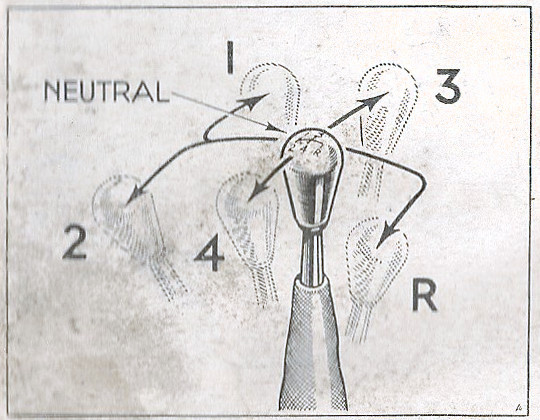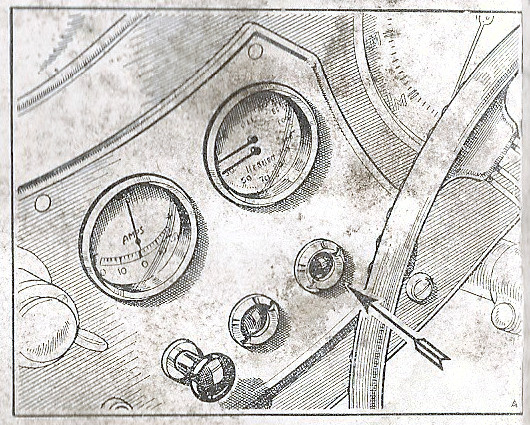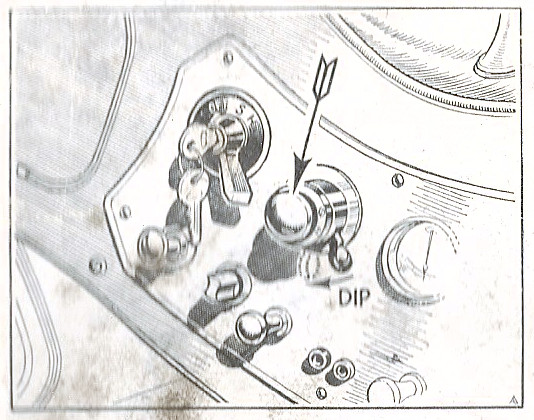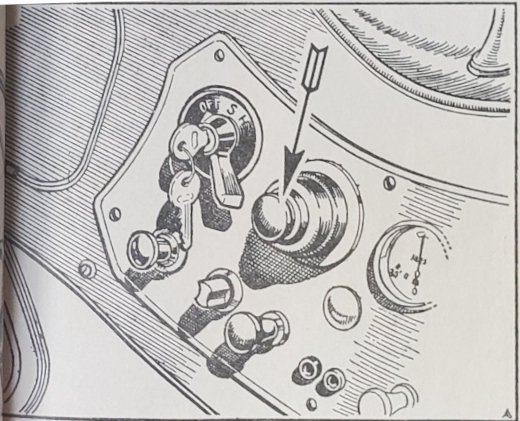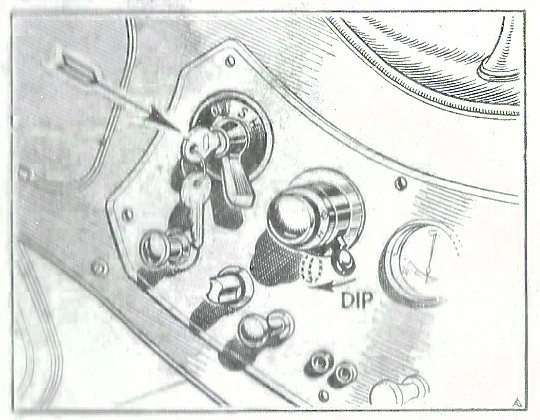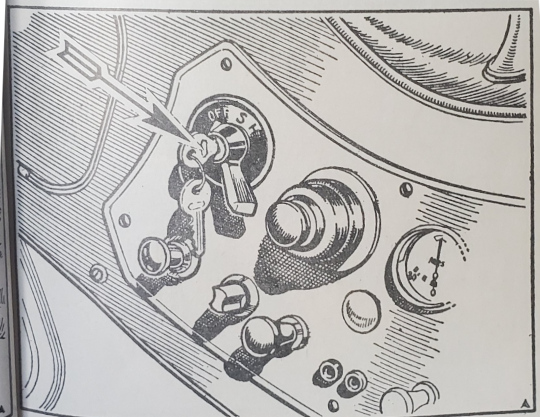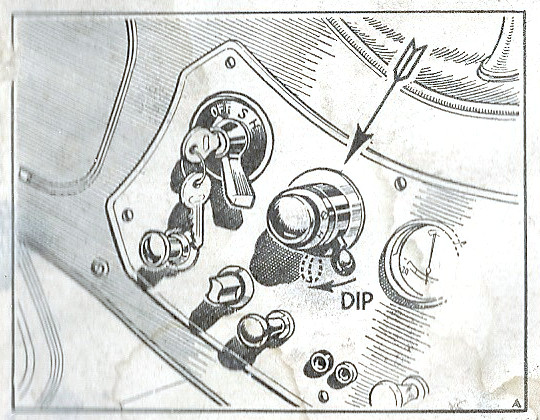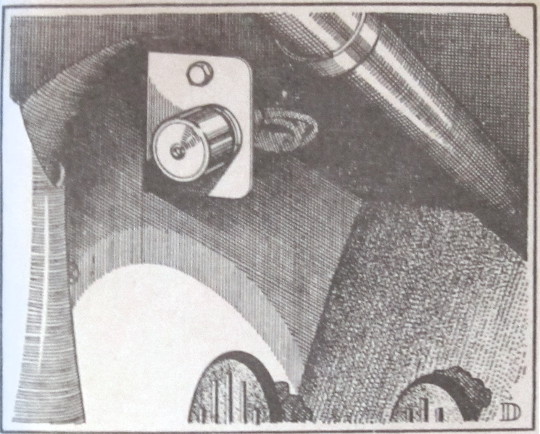PREPARING FOR THE ROAD
Filling Up with Petrol • Filling the
Cooling System • Releasing the Bonnet
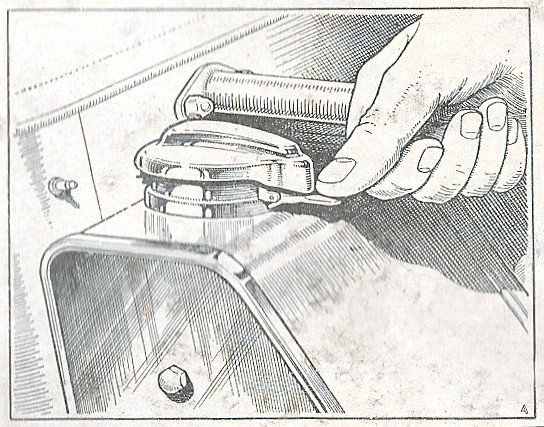
Filling up with petrol
The quantity of fuel in the tank can readily be seen through the large filler which is situated on the left-hand side of the fuel tank at the rear of the car. Depress the small lever to release the cap and a downward pressure on the cap will suffice to close it. Tank capacity 12½ gallons (56 litres). A warning light on the instrument panel is switched on when the supply drops to approx. 2½ gallons (11 litres). (See page 14)
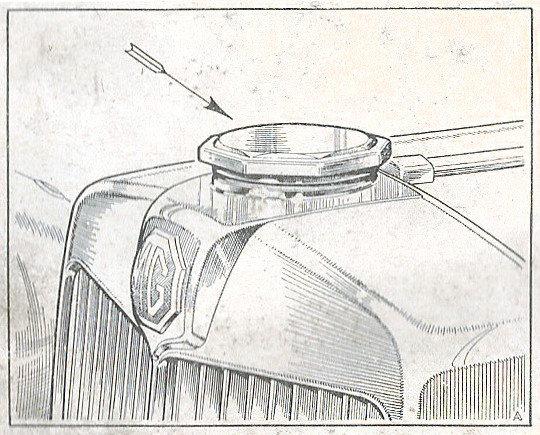
Filling the cooling system
The radiator should be filled to within ½ in. (13 mm.) of the filler neck.
After a few minutes, more water will be required. This is because it takes time for the
water to flow through the thermostat by-pass pipe. It is necessary to make good the water
level and bring it up to the correct height again.
The filler cap is of the normal type and screws into position.

Releasing the bonnet
The bonnet is in two halves, opening along the centre line of the car. Two handles are provided on each side of the bonnet and these, should be moved upwards and forwards in order to release the catches.
5
